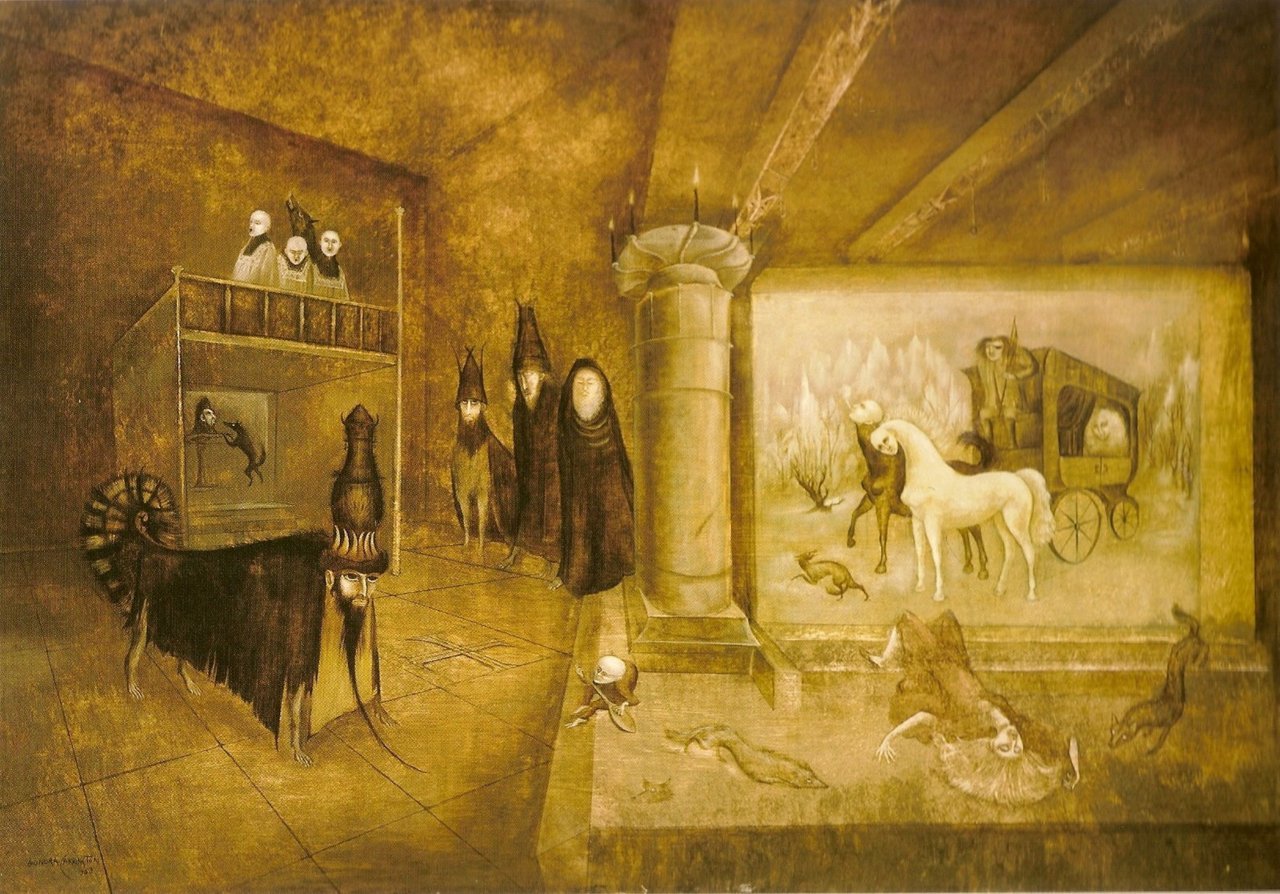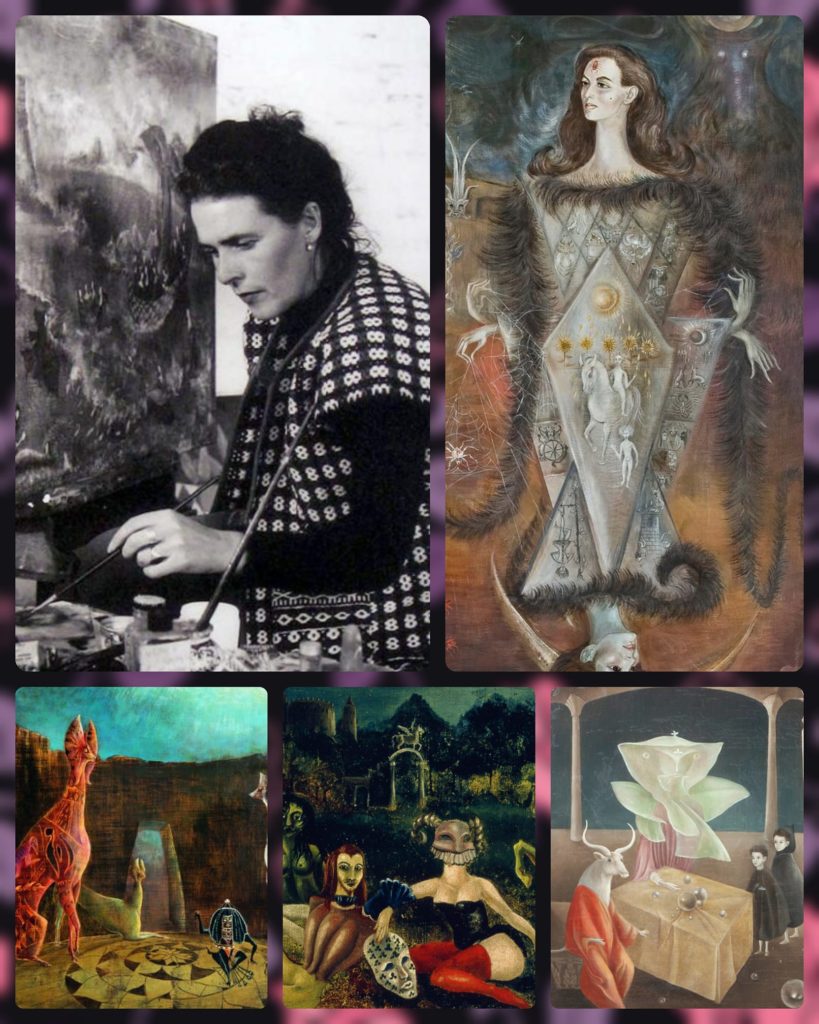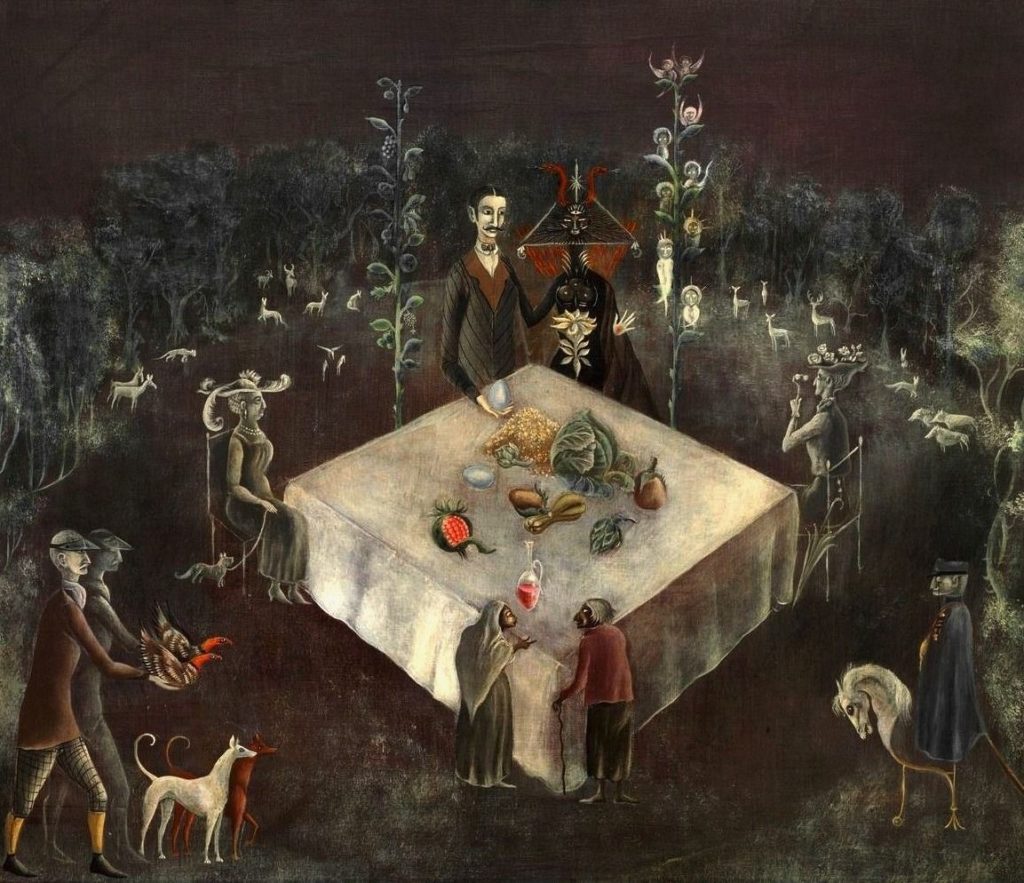
Surrealist art can transport us in ways other art cannot. Madness, darkness, awe, and beauty are all found within the style. Painters such as Salvador Dali, Rene Magritte, Joan Miro, and M. C. Escher have all gone on to infamy, but there is a bevy of artists who contributed to the Surrealist Movement in its heyday yet are sadly overlooked today. One of these pioneers is Leonora Carrington, a British artist whose life was one of turmoil and tragedy, but who constantly found revitalization through her remarkable art. Let us take a trip, back across time and into other, more strange worlds, and tread through the surrealist wonderlands in the art of Leonora Carrington.

Born in 1917 in the United Kingdom, Carrington was always a strange girl. She would conceive of far off alien worlds, and draw pictures of the weird creatures that inhabited them. Her father wished she would be more conventional, failing to understand her creativity. Instead of participating in the usual “ladylike” occupations of the time, she daydreamed and read weird fiction by the likes of Aldous Huxley. She soon found a new home within the budding surrealist movement, bonding in particular with Leonor Fini, who became her collaborator and confidant, and Max Ernst, whom she fell instantly in love with.
However, these bonds were soon shaken with the rise of the Nazi party, who declared surrealism to be “degenerate art,” and thus targeted the artists. Max Ernst was taken to a concentration camp, and Carrington suffered a breakdown and was institutionalized in an insane asylum. While being transferred to another facility, Carrington orchestrated her escape.
In Portugal, a diplomat friend of Pablo Picasso agreed to marry Carrington to grant her immunity, and the pair fled to Mexico. There, Carrington found new life. Her art flourished, and she became a beloved figure of the community. She also bonded with fellow surrealists Frida Kahlo and Remedios Varo. She was an outspoken feminist, firmly believing that all persons should be equal and free in body and mind. She never returned to her native UK, and never again saw her former friends and collaborators.

Carrington’s paintings are her psyche made visual, her mind explored with paint and canvas, so unabashedly her yet speaking profoundly to the deep recesses of our own subconscious. Her strong individuality, a proud otherness, is obvious in the way she exclusively painted fantastical creatures and vaguely humanoid entities. This was the world she belonged to, the one she dwelt in within her mind. The mystical quality of her thoughts, her refusal to be tethered to the dull reality that those in the establishment subscribe to, manifests in the amorphous backgrounds and otherworldly architecture.
There is magic and darkness there, but undoubtedly, a freedom. Carrington truly belonged to another plane of existence, and her story is and inspiring one of perseverance. When she passed in 2011, after a long and fruitful life, she left us these windows into the fantastic realms she saw, giving us the opportunity to free our own minds by exploring the wondrous dreamscapes upon the canvasses.
More Reviews:
Tin Can (2022) Movie Review – We’ve All Just Revived
Seth A. Smith’s Tin Can is a confinement horror with staying power, managing to walk the audience through no less than seven different subgenres, and delight them with delirious imagery,…
20 Best Japanese V-Cinema Horror Films – The Beloved Sub-Genre of Straight-to-Video Terror
Originating in 1980s Japan, V-cinema was a term that was trademarked by the film giant Toei Company as a general label for their direct-to-video content. With the rise in VHS…
Sorgoi Prakov (2013) Film Review – Dare I Live the European Dream?
Sorgoi Prakov (also known as Descent into Darkness, My European Nightmare) is a 2013 French found-footage horror film written and directed by Rafaël Cherkaski, with additional writing from Quentin Boeton and…
The Long Walk (2022) Film Review: Time Travel Trouble
Combining elements of half a dozen genres, The Long Walk is a surprisingly cohesive supernatural time travel drama from Laos, the most recent Southeast Asian country to break onto the…
Yakuza Princess (2021) Film Review – Classic Yakuza Action with a Fresh Perspective
There is probably no better place to start discussing Yakuza Princess than with its setting of Sao Paulo, Brazil. As the film quickly points out in its introduction, Sao Paulo…
Good Boy (2022) Film Review – Man’s Best Friend [FrightFest]
Good Boy is a 2022 Norwegian horror thriller, written and directed by Viljar Bøe. This isn’t the first time behind the camera for Viljar, having written and directed the mystery…
Eden is a Soong-type android learning to pass as human through studies of pop culture, humor, and dark fantasy. Perhaps one day she will learn to love and pronounce “hyoo-mahn” correctly. She was written analyses of music, video games, comics, and film. You can find her other writings on Vocal and WordPress.





![Good Boy (2022) Film Review – Man’s Best Friend [FrightFest]](https://www.grimoireofhorror.com/wp-content/uploads/2023/08/Good-Boy10-365x180.jpg)